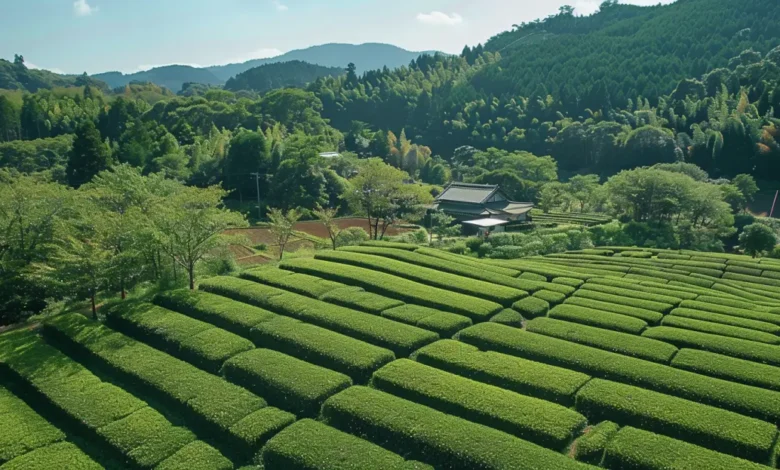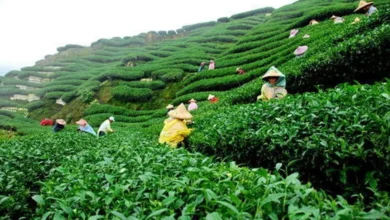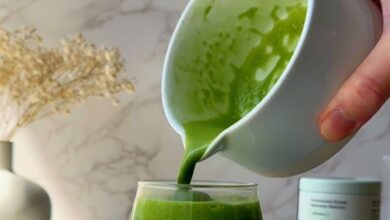Shade-Growing Techniques for Premium Matcha Quality

Introduction
I’ve been growing tea for years, but when I started cultivating matcha, I quickly realized it was a different game. One of the biggest turning points for me was learning about shade-growing — a technique that felt strange at first but turned out to be the secret to truly premium matcha. In this article, I’ll share my hands-on experience with shade-growing, explain why it matters so much, and walk you through different ways to do it on your own organic farm.
If you’re serious about matcha quality, especially if you want to sell it at high prices or export it, this is a must-read.
Why Shade-Growing is Important for Matcha
Shade-growing is not just a fancy practice from Japan. It’s an essential technique that makes matcha different from regular green tea. About 20-30 days before harvest, matcha plants are covered to block sunlight. This simple step causes big changes inside the leaves:
- Chlorophyll levels increase (makes leaves bright green)
- L-theanine (an amino acid) goes up (makes taste smooth and sweet)
- Tannin levels reduce (less bitterness)
All these benefits are important for premium matcha quality. When buyers check matcha, the first thing they look for is the vibrant green color, smooth taste, and fine texture — and shade-growing directly affects all of this.
Basic Science Behind It
When tea plants get less sunlight, they do three things to adapt:
- Produce more chlorophyll to absorb light
- Increase amino acids like L-theanine
- Grow softer, thinner leaves (better for grinding)
That’s why shade-grown matcha is not only healthier but also easier to process and more valuable in the market.
Types of Shade-Growing Techniques
Based on my experience and what I’ve seen in Japanese farms and Indian experiments, here are the top 3 methods you can try:
1. Black Shade Netting (Most Common and Easy)
Material Needed: 70% or 90% black agricultural shade net
Setup:
- Place bamboo or iron poles 4-5 feet high
- Stretch netting over the tea rows
- Leave 1-2 feet of air space between net and plants
Cost: Moderate (Around ₹50,000-80,000 per acre)
Benefits:
- Easy to install and remove
- Protects from harsh sun, birds, and insects
- Can be reused for many years
Pro Tip: Use 90% netting for the last 7-10 days before harvest to get maximum L-theanine content.
2. Traditional Straw Mats (Japanese Method)
Material Needed: Rice straw or reed mats
Setup:
- Cover the plants with straw mats supported by wooden frames
- Allow filtered light to pass through naturally
Cost: Higher (due to labor)
Benefits:
- Provides natural insulation
- Promotes even growth
- Looks traditional (good for branding or agri-tourism)
Pro Tip: Mix straw mats with netting if full coverage is hard to achieve.
3. Natural Tree Shade (For Small Plots)
Material Needed: Use tall trees planted alongside tea rows
Setup:
- Trees like Gliricidia, Silver Oak, or Leucaena
- Prune to control sunlight
Cost: Low
Benefits:
- Long-term eco-friendly option
- Reduces temperature naturally
- Useful for agroforestry-based matcha farms
Pro Tip: Use natural shade only if you can monitor light levels (too much shade = slow growth).
When and How Long to Shade
- Start Shading: 20-30 days before harvest
- Intensity:
- First 10-15 days: 50-60% shade
- Final 10-15 days: 85-90% shade
This gradual method ensures plants adapt well without stress.
Care During Shading Period
During shading, the plant becomes sensitive. Here are a few things I learned the hard way:
- Water Regularly: Soil dries slowly under shade, but don’t skip watering
- Avoid Chemical Sprays: Even organic sprays can burn leaves under shade
- Watch for Pests: Humid conditions may increase pests — use neem oil or garlic extract
Impact of Shade on Matcha Quality (Table)
| Shade Level | Leaf Color | Taste | Nutrients (L-theanine) | Market Value Impact |
|---|---|---|---|---|
| No Shade | Pale green | Bitter | Low | Low |
| 50% Shade | Light green | Slightly sweet | Medium | Medium |
| 90% Shade | Bright green | Smooth, umami | High | High |
My Own Experience with Shading
In my first season, I didn’t use any shade – and my matcha tasted bitter and looked dull. Then I used a 70% net for 20 days. The next batch was much better – more aroma, richer taste, and higher buyer interest.
Now, I use a combo of 70% for 15 days, then switch to 90% for 10 days. It’s a bit of extra work, but the results are worth it. Export buyers especially notice the difference.
Costs vs. Benefits
| Item | Approx. Cost (per acre) | Benefit |
|---|---|---|
| Shade Net (setup) | ₹50,000 – ₹80,000 | Reusable for 3-4 years |
| Labor | ₹20,000/year | Required for setup & removal |
| Matcha Price Gain | Extra ₹1,500-5,000/kg | Due to color, taste & smooth texture |
FAQ
Q1: Can I grow matcha without shade?
Technically yes, but it won’t be true matcha. The taste, color, and quality will be low.
Q2: What is the best shade net percentage?
Start with 70% for 15 days, then 90% for the final 10 days before harvest.
Q3: Does shade-growing affect yield?
Slightly, yes – but the quality increase more than makes up for it.
Q4: Can I get organic certification with shade nets?
Yes. Shade netting does not interfere with organic standards.
Conclusion: Grow Smarter, Not Harder
Shade-growing is one of those simple steps that can take your matcha from average to excellent. It does require planning, setup, and care – but once you master it, the rewards are big. You can charge a premium, get better reviews, and even attract international buyers.
Start small, test the method on one plot, and compare results. You’ll see how the leaves look healthier, taste better, and fetch a higher price.
Matcha is not just about growing leaves. It’s about crafting quality — and shade-growing is the artist’s brush.
Stay organic. Stay aware. And grow with purpose.




